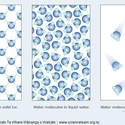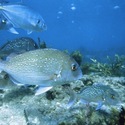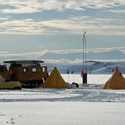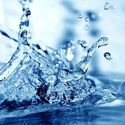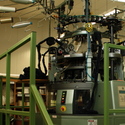Observing and asking questions are essential parts of what a scientist does. Through their observations, scientists try to build more accurate explanations of how the world works. The scientists in this article observe water in its different forms.
Ice cores tell a story
Have you seen tree rings – patterns formed in tree trunks as they grow from year to year? Tree rings can give us information about the tree’s history and the environment the tree grew in. Ice cores from Antarctica can tell a similar story. Every year, the winter snowfall leaves layers of snow called snow bands. As more snow falls, the lower layers of snow get compressed (squashed) and turn into ice. In very cold places like Antarctica, the ice builds up over the centuries.
NIWA scientist Dr Katja Riedel travels to Antarctica to gather ice samples that formed 300 years ago. She takes the ice cores back to her lab in Wellington. Katja uses special machines that crush the ice and measure gases caught in air bubbles in the ice. These measurements help her answer questions about how our atmosphere has changed over the centuries.
Observing changes in Rotorua lakes
University of Waikato Professor David Hamilton is also interested in the past. He is curious to know how water quality in the Rotorua lakes has changed and how it can be improved. Wastewater from septic tanks and run-off from farms caused changes in the lakes, making them less pleasant for wildlife and people. David uses monitoring buoys to gather lots of information about the lake water. He uses this information to help the people living in the Rotorua region to manage the land and the lakes.
Water vapour, peat bogs and farmland
Water vapour is invisible – so how does Dr Dave Campbell from the University of Waikato observe water vapour levels in peat bogs and farmland? Like the other scientists, Dave uses equipment that allows him to observe things in more detail than our eyes or other senses allow. The equipment has special sensors that measure how water vapour moves between the land and the atmosphere. Dave uses the information to learn more about native and agricultural ecosystems and how they work.
Nature of science
Scientists often use equipment to help them make observations that are much more precise than human senses are able to handle. Equipment is also capable of making many measurements each second or working 24/7 – things beyond normal human capability.
Related content
Meet the scientists featured in this article
Professor Keith Hunter is a scientist fascinated with the ocean’s chemistry and interested in how life first evolved in the oceans.
Observation is an essential part of science, learn more in the article Observation and science.



